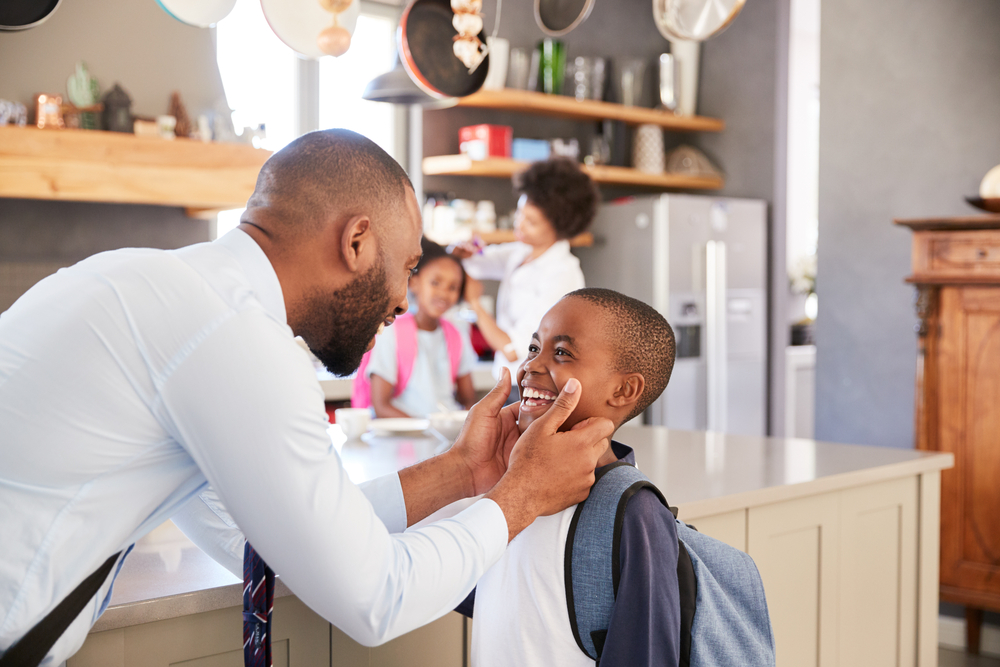As a new academic year begins, back to school is more overwhelming than ever before.
The 2020 school year is off to a chaotic start as administrators, teachers, and parents strive to make decisions about safety, homeschooling, and online learning. Already, schools in the south have delayed openings and implemented e-learning measures to protect students from the COVID-19 pandemic.
As we work to make these difficult choices, it is more important than ever to consider the mental health of our children. Today, we’ll discuss how to protect your child’s well-being during these unprecedented times.
Check in with Your Child Before Going Back to School
Going back to school is a major event for kids and teens in the best of times. This experience can bring up a vast array of emotions, including stress, anxiety, and excitement. When you add COVID-19 into the equation, these feelings are heightened to new levels. Our children haven’t seen their peers for months; whether they’ll be returning to the classroom or learning from home, it’s important to aid them in navigating those emotions.
Help your child to feel at ease by checking in with them about their mental state. How do they feel about returning to school (or remaining home)? What is worrying them, and how can you help them to address those concerns? Make sure they know that their feelings are normal and to be expected.
Remind Your Child of Safety Measures
If your child is scared about returning to school, remind her that the adults in her life are working to protect her to the best of their ability. Describe the safety measures that are in place to keep students (and teachers) healthy. Remind them of what they can do to prevent the spread of germs. You can do this by emphasizing the importance of handwashing and sneezing/coughing into their elbows, not their hands.
Be Honest About Changes
If your child will be attending in-person classes, be honest with them about upcoming changes that they should expect in the classroom. For example, tell them about masks, additional sanitizing, smaller class sizes, or protective clothing they’ll need to wear. Encourage them to practice social distancing as much as possible while on the premises.
Highlight the Positives of Back to School
Whether learning will be in the classroom or virtual, remind your child about the silver lining. Reframe anxiety into excitement by telling them that they will see their friends again or learn new things. You can encourage them to take precautions during this process while also enjoying their friends’ company, online or in person.
Be Empathetic
Approach each conversation with empathy. Let your child know that you understand that they’re feeling anxious about COVID-19, but that it’s healthy to share their worries with parents and others.
Many schools are requiring that students wear protective clothing. This can be upsetting for kids, and it can be difficult for those who are already frustrated by wearing masks for brief trips outside the home. Reassure your child that the mask will help to protect them and emphasize the importance of adhering to the school’s safety measures.
Connecting from Afar
Unfortunately, many kids are finding themselves isolated from their friends this fall. Some students are participating in fully online classrooms. Others are returning to school, but smaller class sizes or rotational schedules have resulted in a child feeling separated from their close circle of friends.
First, reassure your child that reopening is a gradual process – tell them that schools will be fully reopened for everyone once it is safe to do so. Once this is announced, share details with them to build excitement and manage expectations. Prepare your child for the possibility of schools closing again – this will help them prepare for the period of adjustment that lies ahead.
Finally, remind your child that learning can happen anywhere: at home or at school. The same is true for staying in touch with friends.
COVID-19’s Effect on Children: Back to School
While the pandemic seems to be sparing children’s physical health, it has had a dramatic impact on their mental health. Despite the lack of research on the topic, science generally regards the data that does exist as troubling. In one study from China, a group of children who had been under lockdown for an average of 33.7 days, just under 23% of them reported symptoms of depression, while almost 19% experienced anxiety.
Parents have reported issues with their childrens’ behavior. “I’m seeing 100% more behavioral problems,” says Lisa Stanton, a parent interviewed by Time. “My son, who has learning issues, has three meltdowns a day. With my daughter, the problem became addiction to the iPad… We took the tablet away, and there were hysterics. She told us, ‘I want to be on the tablet all the time because [when I am], I don’t feel so lonely.’”
While behavioral problems, anxiety, depression, and isolation are common themes, each child has been affected by the pandemic differently. If you would like some additional help and support during these challenging times, please contact Pine Grove by calling 1-888-574-4673. Our Child and Adolescent Services staff have crafted a treatment program tailored to the unique needs of our youngest patients.

